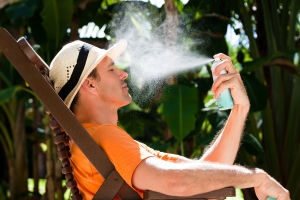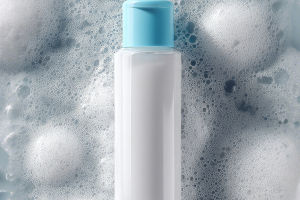Have you ever looked in the mirror and wondered why your skin changes as you grow older?
Those fine lines, wrinkles, and loss of firmness are part of a complex biological process, influenced not only by time but also by how our skin cells function and interact with the environment.
The science of skin aging reveals fascinating details about what really happens beneath the surface—and how, armed with this knowledge, we can take meaningful steps to slow down these changes.
Understanding the Skin's Aging Process: More Than Just Time
Aging skin results from two intertwined processes: intrinsic aging (natural, genetic programming) and extrinsic aging (environmental damage, lifestyle factors). Both contribute to visible changes, but the biological mechanisms go deep.
• Intrinsically, our skin cells experience a decline in their ability to divide and regenerate, known as cellular senescence. This means skin's renewal slows, leading to thinner, more fragile skin. Key players here include fibroblasts—cells that produce collagen and elastin, essential proteins for skin elasticity and strength. As fibroblasts age or become senescent, collagen production drops, fibers fragment, and skin loses its youthful bounce.
• Extrinsic factors like ultraviolet (UV) radiation from the sun cause photoaging, accelerating collagen breakdown and damaging the skin's structure with oxidative stress—an overload of harmful molecules called reactive oxygen species (ROS). Pollution, and poor diet contribute similarly by triggering inflammation and enzymatic activity that degrade collagen and elastin.
The combination of these factors results in wrinkles, sagging, uneven texture, and pigmentation changes characteristic of aged skin.
Collagen and Elastin: The Skin's Structural Pillars
Collagen and elastin form the extracellular matrix, a scaffold giving skin its firmness and elasticity. Aging disrupts this balance:
1. Reduced Collagen Synthesis: Fibroblasts slow down, producing less collagen. This loss weakens the skin's support, causing it to sag and wrinkle.
2. Increased Degradation: Environmental stress activates enzymes called matrix metalloproteinases (MMPs), which break down collagen and elastin faster than they can be replaced.
3. Glycation Damage: Sugars in our blood bind to collagen and elastin in a process called glycation, forming stiff, cross-linked fibers known as advanced glycation end products (AGEs). This makes the skin less flexible and accelerates wrinkle formation.
Researchers are looking into treatments that stimulate collagen production, inhibit MMPs, and combat glycation to maintain skin's resilience.
Recent Advances: How Science Is Slowing Skin Aging
Modern research has developed several strategies grounded in this science:
• Retinoids: Derived from vitamin A, retinoids boost collagen synthesis and enhance cell turnover, improving skin texture and reducing wrinkles. They also inhibit MMP activity, helping prevent collagen breakdown.
• Antioxidants: Ingredients like vitamin C, vitamin E, and polyphenols neutralize ROS, reducing oxidative stress. Topical antioxidants support the skin's defense systems and can lighten pigmentation.
• Peptides and Growth Factors: These molecules signal fibroblasts to increase collagen and elastin production, promoting skin repair and firmness.
• Senolytics and Senomorphics: Cutting-edge research is exploring compounds that selectively remove senescent cells or modify their harmful secretions (called the senescence-associated secretory phenotype, SASP), which contribute to inflammation and tissue degradation. Targeting these cells could revolutionize anti-aging therapies.
• Photoprotection: The best way to slow extrinsic aging is by protecting skin from UV exposure with broad-spectrum sunscreens and wearing protective clothing, reducing photoaging damage drastically.
Practical Steps to Support Youthful Skin
While the science can get complex, some practical habits help maintain skin health and slow aging:
1. Use daily broad-spectrum sunscreen to block harmful UV rays.
2. Incorporate antioxidant-rich skincare and maintain a nutritious diet high in fruits, vegetables, and healthy fats.
3. Apply retinoid products gradually to stimulate collagen and cell renewal.
4. Keep skin hydrated with moisturizers to support barrier function.
5. Avoid excessive drinking which increase oxidative stress and inflammation.
6. Manage stress and get quality sleep to promote skin repair cycles.
Looking Ahead: The Future of Anti-Aging Science
Research continues into gene therapies, stem cell activation, and novel molecules that regulate senescence and oxidative damage. Scientists aim for personalized anti-aging treatments tailored to an individual's genetic and environmental risk factors.
In addition, non-invasive technologies like laser therapy, microneedling, and radiofrequency are advancing to stimulate collagen remodeling without surgery.
Your Skin, Your Story
The journey of aging skin is unique to each person, shaped by biology and lifestyle. While we cannot stop time, understanding the molecular and cellular science behind skin aging empowers us to take informed care of our skin.
How will you use this knowledge in your daily routine? Have you noticed changes in your skin that intrigue you or motivate new habits? Aging skin reveals life's story line by line—but with science guiding us, we can make those lines a little gentler and our skin resilient longer.
This article draws on recent scientific reviews and research into skin aging biology from peer-reviewed journals, including mechanisms of cellular senescence, collagen degradation, oxidative stress, and innovative anti-aging interventions reported by experts in dermatology and molecular biology.
Would you like tips on choosing effective anti-aging products or lifestyle changes scientifically shown to benefit skin? Let's explore the best ways to embrace aging gracefully with healthy, confident skin.


